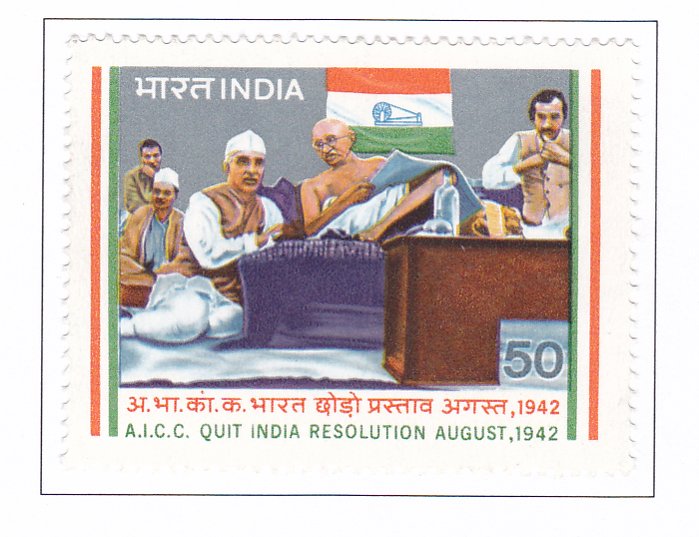AICC Quit India Resolution, August 1942

Technical Data
| Stamp Set | India's Struggle for Freedom |
|---|---|
| Date of Issue | August 9, 1983 |
| Denomination | 50 p |
| Quantity | 1,500,000 |
| Perforation | comb 14 x 13½ |
| Printer | Security Printing Press, Nashik |
| Watermark | No Watermark |
| Colors | Multicolor |
| Catalog Codes |
Michel IN 955 Stamp Number IN 1022 Yvert et Tellier IN 766 Stanley Gibbons IN 1091 |
| Themes | Flags |
The Quit India Movement stands as one of the most pivotal chapters in India’s struggle for freedom. Adopted by the All-India Congress Committee on August 8, 1942, the movement symbolized a decisive shift towards mass struggle on non-violent lines under the leadership of Mahatma Gandhi. The demand for the complete withdrawal of British power from India was not just a call for political liberation; it was a clarion call for the assertion of Indian agency in determining its own destiny.
Gandhi’s impassioned words, “I am not going to be satisfied with anything short of complete freedom… we shall do or die, We shall either free India or die in the attempt,” encapsulate the spirit of defiance and determination that fueled the movement. The arrest of key leaders like Gandhi, Jawaharlal Nehru, Vallabhbhai Patel, and Abdul Kalam Azad, among others, marked the British government’s immediate response to the perceived threat to its authority.
The mass arrests, numbering over 60,000 officially and likely more in reality, and the tragic loss of lives, estimated at around 10,000, underscored the intensity of the struggle and the sacrifices made by countless Indians in the pursuit of freedom.
The Quit India Resolution not only challenged British rule but also galvanized the Indian populace into action. It ignited a spark of resistance that spread across the length and breadth of the country, inspiring ordinary citizens to join the struggle in myriad ways, from civil disobedience to underground activities.
By highlighting the Quit India Movement on postage stamps, the Indian government pays homage to this significant episode in the nation’s history. These stamps serve as reminders of the courage and resilience displayed by those who participated in the struggle, ensuring that their legacy endures for future generations.
